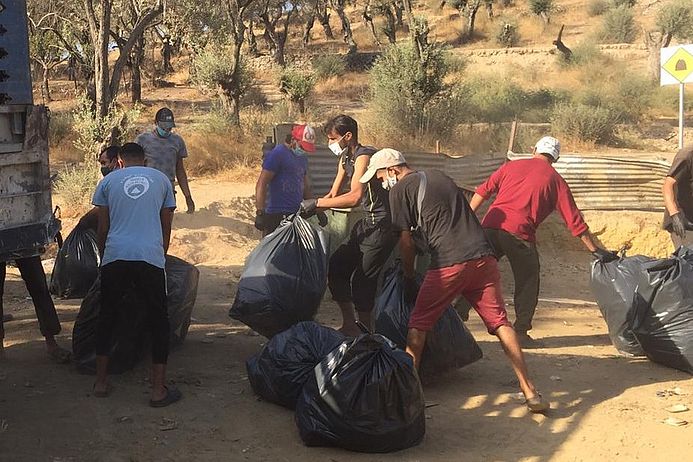Never again Moria! That is what you hear not only from the “Seebrücke” movement, which tirelessly campaigns for the acceptance of refugees from Greece in Germany, but also from Brussels, where the EU Commission announced the outlines of its new asylum and migration pact.
If you take a closer look at the work, however, one by no means gets the impression that something like what has happened in the recently burned down and before for years completely overcrowded slum camp Moria on Lesbos can no longer happen. On the contrary. Much of what the new pact contains is certainly not new but has already been tried out in Moria and the other hotspots on the Greek islands at the expense of human rights. This includes, in particular, the expansion of custodial measures in detention and deportation infrastructures close to the border. With that in mind, it is worthwhile to visualize a few procedures in the burned-down Moria camp.
Fast-track deportation - the new EU migration pact continues the Moria principle
According to the new pact, people with little chance of being granted asylum are to be subjected to a fast-track procedure so that they soon have certainty as to whether they will be accepted in Europe or must return. Even before they have settled in a new place, they should thus be given the opportunity to opt for a "voluntary" return.
What may sound harmless, humanitarian and obvious, has never worked on the Greek islands, despite years of EU efforts, but has encouraged massive breaches of the law. In Moria, for example, there was a prison section where people were detained, sometimes for months, without any legal grounds.
Refugees from Syria were detained there solely on the basis of their entry through the so-called safe third country Turkey, without their grounds for asylum even being heard. And those who were unlucky enough to come from a country with a low recognition rate (below 25 percent), they were detained immediately upon arrival solely because of their nationality and subjected to a so-called fast-track procedure.
Although statistically every fourth asylum application would have been successful, asylum applications from people from the respective countries were directly considered as probably unfounded. The likelihood that their asylum applications were then actually rejected and the recognition rate remained low enough, was increased by the fact that there was usually no access to legal counsel in detention.
"Voluntary" return puts refugees in detention for months
The Moria prison section also held people who had agreed to so-called voluntary return to their country of origin or to Turkey. Many were worn down by the miserable living conditions and the long waiting time on the Greek islands and agreed to return out of desperation rather than "voluntarily". Just like people who were to be deported, they ended up in detention immediately after the decision to return "voluntarily" has been made. They often remained there for months, sometimes for more than a year.
Thus, people who had done nothing but seek protection in Europe were sitting in prison in Moria, awaiting deportation or repatriation. This selective detention - in line with the plans of the German Ministry of the Interior for the German EU Council Presidency - has been extended further and further in Greece. On the island of Kos, since January 2020, all arriving refugees have been detained without exception. In the successor camp Morias on Lesbos, things could soon look similar.
This article first appeared in the Frankfurter Rundschau on September, 25th 2020.


